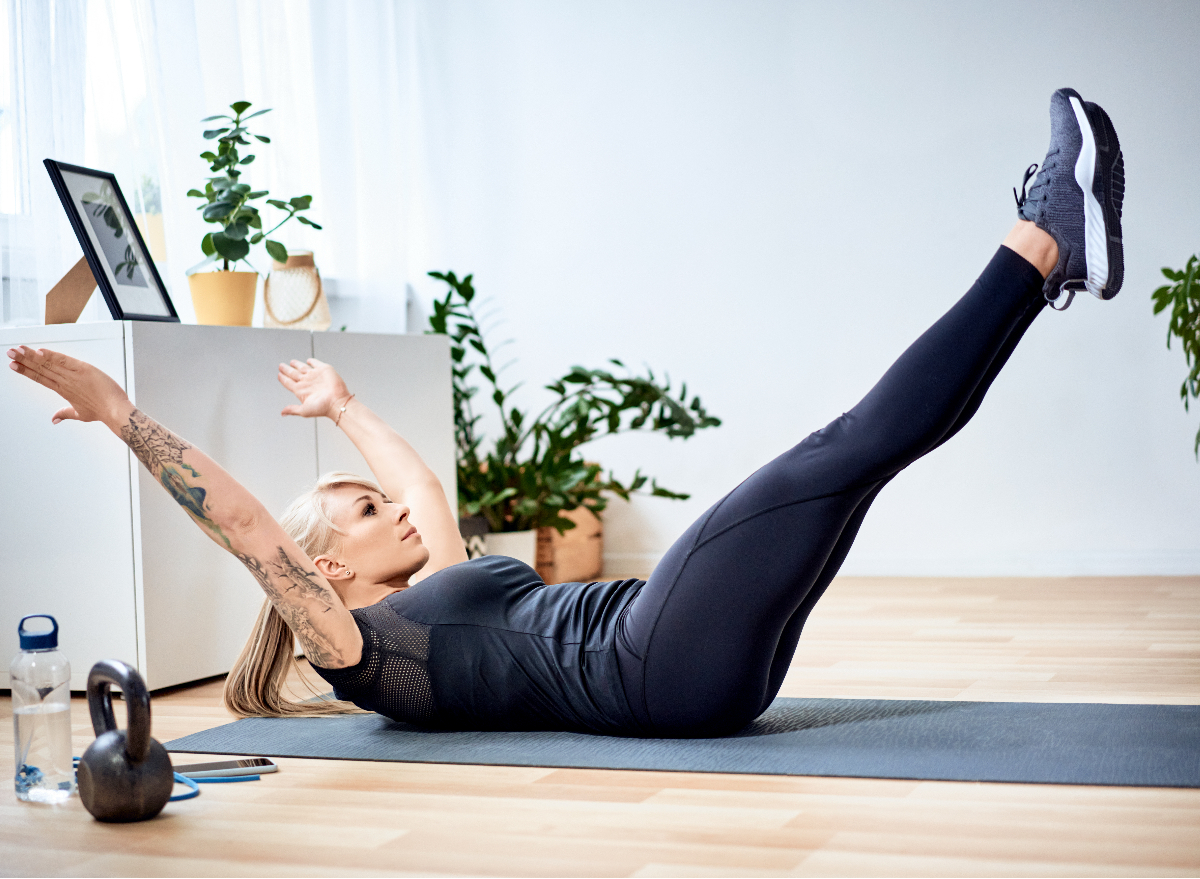If You Can Complete These 3 Floor Exercises After 65, Your Core Is Stronger Than Most

Staying strong after 65 carries a whole new meaning. Rather than focusing on how much weight you can lift, the focus shifts to how well your body moves, stabilizes, and supports itself. That all starts with your core. The stronger your midsection, the better you can easily balance, walk, twist, and move through daily life. It protects your spine, keeps you upright, and helps you react quickly when you stumble or change direction.
Floor exercises challenge your core in ways that machines or standing movements can’t. When your body directly contacts the ground, you eliminate momentum and isolate the muscles responsible for proper stability. Every shake and tremble you feel means your core is firing hard to hold position.
If you can complete these three floor exercises after 65, you’re working with a level of core control and strength that most gym-goers can’t match. Each move tests a different skill: stability, tension, and rotational strength. Together, they reveal a strong, balanced foundation that supports every other movement in your life.
Floor Exercise #1: Three-Point Plank
The 3-point plank takes a traditional plank and removes one point of contact, forcing your entire core to stabilize while maintaining perfect alignment. It challenges your deep core muscles, shoulders, and hips to work in sync. Holding steady with three contact points proves your body can resist rotation and maintain posture under stress. These skills include walking, climbing stairs, and lifting objects safely.
Muscles Trained: Rectus abdominis, transverse abdominis, obliques, shoulders, glutes
How to Do It:
- Start in a high plank with your hands under your shoulders and feet hip-width apart.
- Brace your abs and squeeze your glutes to create full-body tension.
- Lift your right leg a few inches off the floor and hold steady.
- Lower it, then lift your left arm off the floor and hold.
- Continue alternating limbs while keeping your hips square and body aligned.
Passing Score: Hold each 3-point position for 30 seconds without shifting or losing alignment.
Best Variations: Forearm 3-point plank, 3-point plank with shoulder tap, alternating plank reach
Form Tip: Keep your hips level and resist twisting as you lift each limb.
Floor Exercise #2: Hollow Hold
The hollow hold is a gold standard for core stability and control. It demands constant tension through your abs and hip flexors while keeping your lower back pressed into the floor. Many people lose strength here with age, leading to back pain and posture issues. Holding this position means your core can handle pressure, stabilize your spine, and support strong movement patterns.
Muscles Trained: Rectus abdominis, transverse abdominis, hip flexors, quads
How to Do It:
- Lie on your back with arms extended overhead and legs straight.
- Press your lower back into the floor and lift your shoulders and legs a few inches off the ground.
- Keep your ribs down and core tight as you maintain the position.
- Breathe slowly and stay controlled.
Passing Score: Hold for 45 seconds while pressing your lower back firmly into the floor.
Best Variations: Bent-knee hollow hold, hollow rock, single-leg hollow hold
Form Tip: Keep your ribs tucked down and avoid arching your back.
Floor Exercise #3: Side Plank with Rotation
This move trains your obliques and deep stabilizers while introducing controlled rotation, which declines with age but remains vital for balance and coordination. The side plank with rotation builds dynamic control, improves shoulder stability, and strengthens the muscles that help you twist, reach, and move efficiently in daily life.
Muscles Trained: Obliques, transverse abdominis, shoulders, glutes, spinal stabilizers
How to Do It:
- Lie on your side and prop yourself up on your elbow with legs stacked.
- Lift your hips to form a straight line from head to feet.
- Extend your top arm toward the ceiling.
- Rotate your torso and thread your top arm under your body.
- Return to the starting position and repeat for reps.
Passing Score: Perform 8 to 10 rotations per side while maintaining control and alignment.
Best Variations: Side plank with reach-through, side plank hip lift, side plank leg raise
Form Tip: Rotate from your torso, not your hips or shoulders.
The Best Ways to Improve Your Core Strength After 65

Building a stronger core comes from consistent, focused effort that challenges your muscles to stabilize, resist, and move with control.
- Train stability before power: Master planks, side planks, and holds before adding faster or weighted movements.
- Incorporate anti-rotation work: Exercises like the Pallof press and dead bug improve your body’s ability to resist unwanted movement.
- Breathe with control: Exhale entirely during exertion to brace your core naturally and protect your spine.
- Use full-body movements: Squats, carries, and step-ups engage your core through real-life ranges of motion.
- Prioritize recovery: Give your core time to adapt and rebuild. Train it two to three weekly with at least one rest day between sessions.
- Stay consistent: Small daily efforts, like engaging your abs while walking or standing tall, build long-term stability.